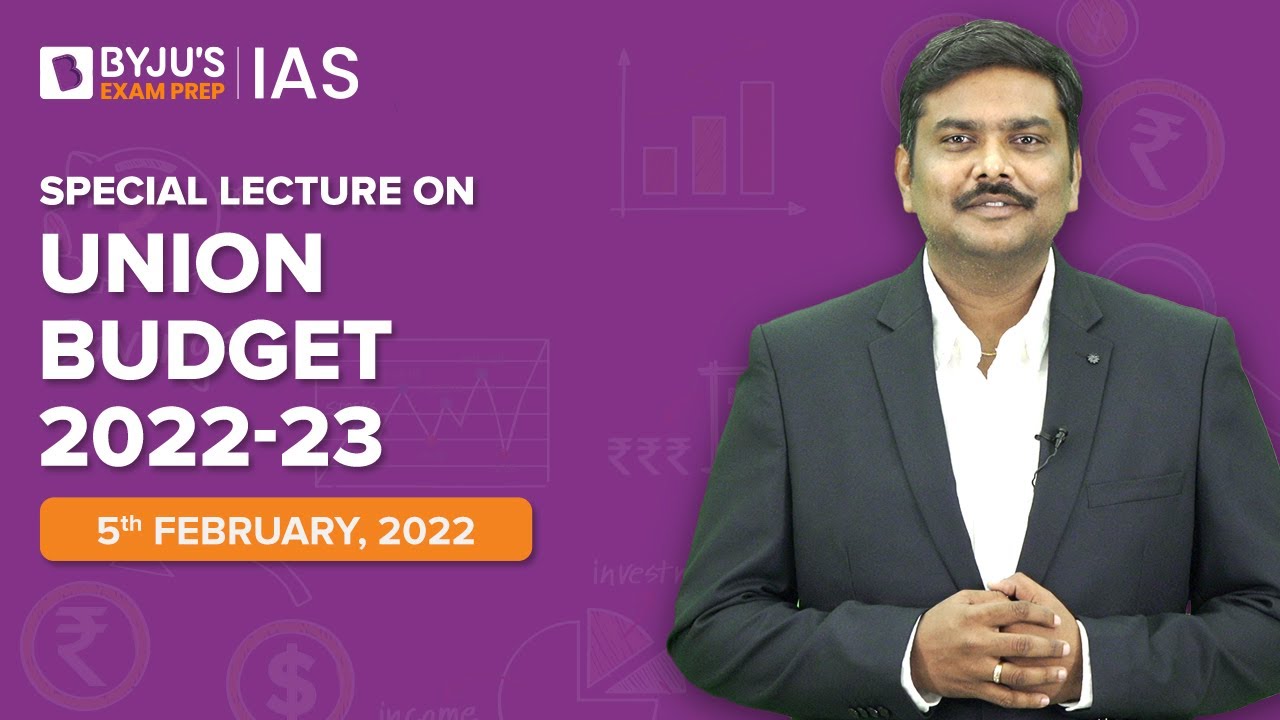The Union Budget is the annual budget of the Indian Republic. It is presented every year in the month of February generally by the Union Finance Minister. On this page, you can read all about what a budget is, and what the Union Budget 2022-23 talks about. This is an important topic for the UPSC exam.

Union Budget – Introduction
The Union Budget is also known as the Annual Financial Statement. Article 112 of the Constitution of India lays down that it is a statement of the estimated expenditure and receipts of the Government for a particular year.
- The Budget keeps the account of the finances of the government for the fiscal year (from 1st April to 31st March).
- The Budget is presented on 1st February (until 2016, it was presented on the last working day of February) so that it can materialise before the commencement of the new financial year which starts on 1st April.
- In 2017, a 92-year-old tradition was broken when the railway budget was merged with the Union Budget and presented together.
- The Budget has to be passed by the Lok Sabha before it can come into effect.
- The Union Budget is divided into Revenue Budget and Capital Budget. For more on these terms, check Union Budget – Important Economic Terms.
- In the Union Budget, the disbursements and receipts of the government comprise the various types of government funds in India namely, the Consolidated Fund of India, the Contingency Fund and the Public Account.
- The Economic Survey of India is released ahead of the presentation of the Budget.
Important Highlights of Budget 2022 for UPSC
The Union Budget 2022-23 seeks to complement macro-economic level growth with a focus on micro-economic level all-inclusive welfare. The budget aims to lay a strong foundation to steer the Indian economy towards Amrit Kaal for the next 25 years, from India at 75 years to India at 100.
Union Budget 2022 focusses on 4 pillars:
- PM GatiShakti
- Inclusive Development
- Productivity Enhancement & Investment, Sunrise Opportunities, Energy Transition, and Climate Action
- Financing of Investments
Union Budget 2022-23: Top Economic Indicators
| Economic Indicators | Analysis |
| Growth estimates |
|
| Deficit |
|
| Capital expenditure |
|
| Repo rate |
|
| FDI |
|
| Inflation |
|
| Merchandise exports |
|
Significant Announcements under Different Sectors
| Sector | Highlights |
| Infrastructure |
|
| Education |
|
| Health |
|
| Agriculture |
|
| Defense |
|
| Finance |
|
| Railways |
|
| MSMEs |
|
Union Budget 2022-23: Top Policy Highlights
| Policy | Analysis |
| Multimodal Connectivity |
|
| International Arbitration Centre |
|
| Amendments to the Insolvency and Bankruptcy Code |
|
| Digital Rupee |
|
| Tax on Virtual Digital Assets |
|
| Committee to govern different processes |
|
| 5G spectrum |
|
| Data centres |
|
| Green Bonds |
|
| Battery swapping policy |
|
| Emergency Credit Line Guarantee Scheme for MSMEs |
|
| Special Economic Zone Act |
|
| PLI scheme |
|
| Empowerment of women |
|
| PM GatiShakti |
|
Union Budget 2022-23: Top Tax Highlights
| Factor | Analysis |
| Income tax |
|
| Revised Income Tax return policy |
|
| Tax holiday |
|
| surcharge or cess |
|
| Virtual digital assets (VDA): |
|
| International Financial Services Centre (IFSC) |
|
| Concessional tax regime |
|
| Alternate minimum tax |
|
Union Budget 2022 – 23:- Download PDF Here
Comments